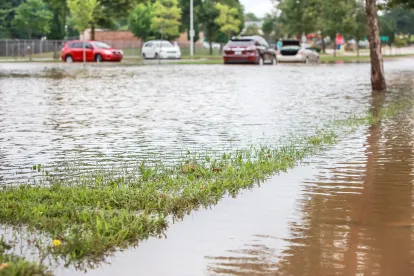Many currently unregulated commercial, industrial, and institutional properties in Eastern Massachusetts may soon require stormwater upgrades in order to meet the new rigorous Clean Water Act (CWA) stormwater discharge permitting requirements being developed by the U.S. Environmental Protection Agency (EPA). These changes are likely to affect owners’ and operators’ infrastructure, maintenance, and operational costs.
The anticipated regulatory changes result from EPA’s September 2022 exercise of a rarely used CWA authority—known as Residual Designation Authority, or RDA—to announce a stormwater discharge permit requirement for currently unregulated private properties located in the Charles, Mystic, and Neponset River watersheds. And, with a draft permit expected by Fall 2024, property owners and operators may shortly find themselves seeking compliance solutions.
Impacted Properties
Properties with the following attributes will soon need to comply with a CWA general permit:
- commercial, industrial, and institutional (CII) land use types;
- containing one or more acre(s) of impervious area; and
- located in the Charles, Mystic, or Neponset River watersheds.
Extensive Repercussions
Based on the above property characteristics, the discharge permit is expected to have a broad impact on properties in Eastern Massachusetts - an EPA analysis of the three Massachusetts watersheds identified an estimated 3,625 private CII parcels with one or more acre(s) of impervious area in nearly 60 communities around Greater Boston: approximately 1,805 CII properties in the Charles watershed; 993 CII properties in the Mystic watershed; and 827 CII properties in the Neponset watershed.
Some property uses potentially affected include:
- Shopping centers and big-box stores;
- Office buildings;
- Parking lots;
- Hospitals and health care facilities;
- Private schools, colleges, and universities;
- Industrial facilities not presently regulated under the Multi-Sector General Permit (certain pharmaceutical, biotech, life sciences); and
- Non-industrial sections of presently regulated industrial facilities (such as parking lots and office space).
It is noteworthy that single-family and multifamily residential uses are not currently subject to the new permitting scheme.
Anticipated Requirements
Specifically, impacted CII properties will need to obtain coverage under a National Pollutant Discharge Elimination System (NPDES) general permit, likely through a showing of compliance with best management practices (BMPs) for stormwater control and management. While details are forthcoming, implementation of these BMPs will require advanced planning and may prove costly.
Based on EPA communications, the permit is anticipated to require compliance through actions (i.e., implementation of BMPs) rather than direct demonstration of compliance via stormwater testing. Potential BMPs range from good housekeeping strategies such as parking lot sweeping to potentially costly infrastructure upgrades such as underground infiltration and manufactured treatment devices. After the final general permit is issued by EPA, it is anticipated that affected property owners will need to submit Permit Registration Documents, including a Notice of Intent and a site-specific Stormwater Pollution Prevention Plan, and satisfy their applicable BMP requirements within the permit’s defined deadlines.
If a recent Los Angeles County draft permit released under EPA’s RDA authority serves as a guide, property owners and operators can expect requirements both for mandatory BMPs—good housekeeping practices, exposure minimization, erosion control, and employee training—and implementation of more substantial BMPs sufficient to control stormwater discharge during an 85th percentile 24-hour storm event.
Site owners and operators may be required to have all on-site BMPs operational and functioning within three years from final permit issuance, similar to the Los Angeles County example. Enforcement of the permitting requirements may include the imposition of escalating monetary fines for violations of permit conditions under the CWA. Note that the draft permit in Los Angeles County does not allow for any hardship waivers from coverage.
Uncertainty Remains
Until EPA releases the draft permit, its full scope is yet unknown. There exists a lack of clarity on key questions such as who is legally responsible for compliance (e.g., a property owner vs. a lessee operator). And exactly how EPA will enforce the permit or incentivize collaborative action remains to be seen.
Next Steps
EPA is currently seeking feedback before the release of the draft permit, particularly around implementation challenges (e.g., siting challenges and costs), permit phasing, compliance timeline, and the interplay with municipal stormwater management for larger landowners. Following the release of the draft permit, EPA will hold a public comment period of at least 30 days, after which the final permit will be issued. Those property owners and operators potentially affected by the new requirements should consider providing comments to EPA both pre- and post-release of the draft permit.
Further Information
Developers, operators, and property owners in Massachusetts would be well advised to consider the impact of these permitting changes concerning CII properties in the three watersheds.
Patrick O'Connor also contributed to this article.




 />i
/>i

